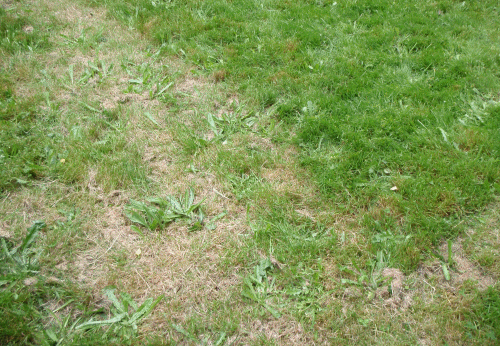
 4
4








Brenda
Bloom where you are planted.
http://restfultrailsfoodforestgarden.blogspot.com/
 2
2




Brenda Groth wrote:
i do have a possible idea..follow around contracting companies..when they are levelling for roads, parking lots, stores, (genearlly for houses they save the soil)..and see if there is soil available.













 2
2




"the qualities of these bacteria, like the heat of the sun, electricity, or the qualities of metals, are part of the storehouse of knowledge of all men. They are manifestations of the laws of nature, free to all men and reserved exclusively to none." SCOTUS, Funk Bros. Seed Co. v. Kale Inoculant Co.




[img]http://i109.photobucket.com/albums/n52/havlik1/permie%20pics2/permiepotrait3pdd.jpg[/img]
"One cannot help an involuntary process. The point is not to disturb it. - Dr. Michel Odent




Joel Hollingsworth wrote:
Lead-free gypsum waste might also not be difficult to find nearby; often, it will come along with wood waste, from construction or demolition (if the first coat of paint went on after white lead was banned) crew. Gypsum might also help with bulk, and it can be very good for clay soils.








 2
2




P. ovata is a 119- to 130-day crop that responds well to cool, dry weather. In India, P. ovata is cultivated mainly in North Gujarat as a "Rabi" or post–rainy season crop (October to March). During this season, which follows the monsoons, average temperatures are in the range of 15–30 °C (59–86 °F), and moisture is deficient. Isabgol (P. ovata), which has a moderate water requirement, is given 5 to 6 light irrigations. A very important environmental requirement of this crop is clear, sunny and dry weather preceding harvest. High night temperature and cloudy wet weather close to harvest have a large negative impact on yield. Rainfall on the mature crop may result in shattering and therefore major field losses. Isabgol grows best on light, well drained, sandy loams. The nutrient requirements of the crop are low. In North Gujarat, the soil tends to be low in nitrogen and phosphorus and high in potash with a pH between 7.2 and 7.9. Nitrogen trials under these conditions have shown a maximum seed yield response with the addition of 22 kg/hectare (20 lb/acre) of nitrogen.
"the qualities of these bacteria, like the heat of the sun, electricity, or the qualities of metals, are part of the storehouse of knowledge of all men. They are manifestations of the laws of nature, free to all men and reserved exclusively to none." SCOTUS, Funk Bros. Seed Co. v. Kale Inoculant Co.








"the qualities of these bacteria, like the heat of the sun, electricity, or the qualities of metals, are part of the storehouse of knowledge of all men. They are manifestations of the laws of nature, free to all men and reserved exclusively to none." SCOTUS, Funk Bros. Seed Co. v. Kale Inoculant Co.








"the qualities of these bacteria, like the heat of the sun, electricity, or the qualities of metals, are part of the storehouse of knowledge of all men. They are manifestations of the laws of nature, free to all men and reserved exclusively to none." SCOTUS, Funk Bros. Seed Co. v. Kale Inoculant Co.












paul wheaton wrote:
Geoff,
What do you do if you get to a property loaded with trees?
Are you in league with any other organizations?
Sponsors of some kind?
Somebody that might buy some materials?
When you help people, do you tell them that you will only do it organic?
Is there any paperwork?
It would seem you would be really busy mid-march until june 5.












We are trying to remain low-key initially and avoid going down the typical non-profit organization route. We don't want to own anything, hold funds, have an office, etc. We are a virtual organization with a website that sometimes gets busy, but often is not.
We do have kind of a cool gardener's oath we say with our gardeners.





Brenda
Bloom where you are planted.
http://restfultrailsfoodforestgarden.blogspot.com/
 2
2

























Seth Pogue wrote:
For weed-free soil, how about dredging the silt from back- eddies and frontage ditches of the Clark Fork River?




 1
1





 3
3




How Permies works: https://permies.com/wiki/34193/permies-works-links-threads
My projects on Skye: The tree field, Growing and landracing, perennial polycultures, "Don't dream it - be it! "

| I agree. Here's the link: http://stoves2.com |






